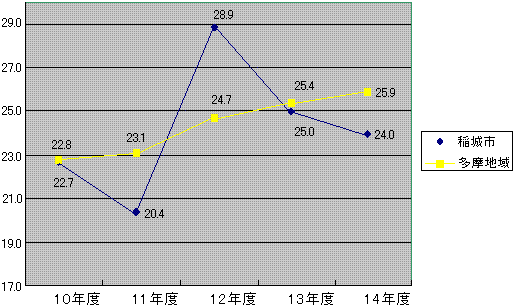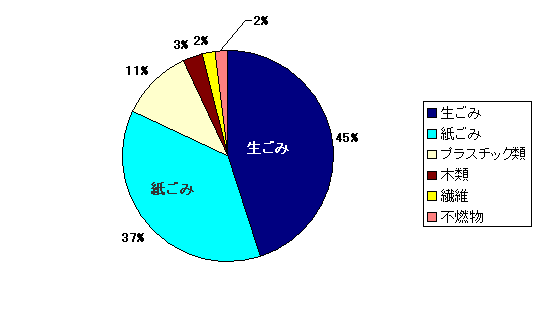The story behind charging for household waste
Updated: March 23, 2021
When Inagi Town started garbage collection in April 1964, garbage collection was charged.
It became free from April 1970, but in October 1993, a fee was charged for oversized garbage collection, and in October 1994, a fee was charged for business-related garbage.
The concept of disposal costs and fees has changed with the times. Inagi City still charges for 10 kilograms or more of household waste per day, but with the recent revision of the Garbage Fee Ordinance, a designated bag system was introduced, and 1 kilogram of garbage was revised to 10 yen.
We will inform you about the current state of garbage and the contents of the revision on the city website, public relations, local briefing sessions, etc. so that citizens can understand.
Garbage discharge per person per day
Transition unit (gram) of (burnable garbage + non-burnable garbage)

Your efforts have resulted in weight loss, but in 2002 it was 21 grams more than the average in the Tama area.
Change in recycling rate
Recycling rate = (recycled amount from recyclables collection + group collection amount + post-collection recycling amount) / (total garbage amount + group collection amount)

The recycling rate in fiscal 2002 was 24%. This is 1.9% lower than the Tama area average. We are in a situation where we must further separate garbage and thoroughly recycle.
Composition analysis of combustible waste
Weight ratio (wet basis) December 2002 survey

Garbage accounts for 45% of combustible waste, 37% paper waste, and 11% plastic waste. Garbage can be reduced by about 10% just by squeezing the water content. In addition, garbage weight loss is planned by separating these and turning them into resources. Paper larger than a business card can be effectively recycled as "Zatsugami".
Trends in treatment costs for municipal waste collection
| year | Collection and transportation consignment fee, etc. (yen) | Intermediate treatment cost (yen) | Final disposal cost (yen) | Total expenses (yen) | Per person (yen) | Per household (yen) | 1 per kilogram (yen) |
|---|---|---|---|---|---|---|---|
| Heisei 10th year |
219,453,399 |
617,304,564 |
127,433,799 |
964,191,762 |
14,714 |
37,473 |
63 |
| Heisei 11th year |
222,844,689 |
491,376,150 |
102,965,767 |
817,186,606 |
12,113 |
30,695 |
51 |
| Heisei 12th year |
218,003,341 |
545,328,023 |
68,037,339 |
831,368,703 |
12,046 |
30,291 |
51 |
| Heisei 2013 |
223,957,841 |
691,728,862 |
61,061,299 |
976,748,002 |
13,963 |
34,718 |
59 |
| Heisei 2014 |
229,855,754 |
669,050,513 |
57,535,417 |
956,441,684 |
13,260 |
32,718 |
59 |
| 5 year average | 222,823,005 |
602,957,622 |
83,406,724 |
909,187,351 |
13,211 |
33,142 |
56 |
The disposal cost of combustible and non-combustible waste in 2002 was approximately 956 million, including collection and transportation costs, intermediate treatment costs at the Tama River Sanitation Association, and final disposal costs at the Santama Wide Area Disposal Association. Yen. It costs about 13,000 yen per person per year. Since the city tax is about 11.4 billion yen, about 8.4% of the city tax is allocated to the disposal of combustible and non-combustible waste.
Examination progress of charge for garbage
| September 1999 | Council for Promotion of Waste Reduction, etc. Reported on "Review of fees for business-related, oversized, and brought-in garbage, and charging for general household garbage" |
|---|---|
| January 2001 | Proposal to charge for garbage from the perspective of fairness of the burden of the benefits of the 2nd Administrative Reform Outline |
| March 2001 | Complete abolition of dust box |
| March 2003 | Formulation of basic environmental plan (72 measures) |
| September 2003 | Suggested opinion on "Specific content of fee-charging" by Council for Promotion of Waste Reduction, etc. |
| December 2003 | Amendment of city council ordinance approved |
From October 1, 2004, we will implement a garbage charge.
Purpose and effects of charging for household waste
Prolonging the life of final disposal sites
Incinerated ash from garbage in Inagi City is landfilled at the Santama Wide Area Disposal Association Futatsuzuka disposal site in Hinode Town.
However, as things stand now, this landfill is expected to be full by 2013.
Promote waste reduction and recycling
In the Tama area, municipalities that have already implemented a charge system have reduced the amount of garbage by an average of about 15%.
Inagi City also plans to reduce the amount of garbage by 15% by introducing a charge.
Reduce waste disposal costs and ensure fair sharing
Currently, most of the garbage is disposed of by tax, but by introducing a charge, the burden will be faired according to the amount of garbage.
Raise awareness of waste issues

Incineration ash brought to the Futatsuzuka disposal site in Hinodemachi
Designated Bag Pricing
Respect the reports and opinions of the Waste Reduction Promotion Council
(1) Pay-as-you-go system using designated collection bags
About 20% of garbage collection and processing expenses (burnable garbage/non-burnable garbage) are borne by citizens.
909,187,351 yen (5-year average collection and disposal cost) ÷ 1,6112 tons (estimated amount of waste discharged) ÷ 1,000 kg per 1 ton x 20% = 11.3 yen per 1 kg
(2) Consideration of balance with neighboring cities
7 cities average 10 yen per kilogram (7 cities = Ome City 8 yen, Hino City 14 yen, Kiyose City 7 yen, Akishima City 10 yen, Fussa City 10 yen, Higashimurayama City 12 yen, Hamura City 10 yen)
For this reason, we have set a fee of 10 yen per kilogram.
PR for everyone
We will do the following to make everyone aware of the designated household waste bag (paid) system.
- Practice of station and street PR
- Campaign by promotion members and staff such as waste reduction
- Local briefing sessions for residents' associations, etc.
- PR for small housing complexes
- PR through schools and nursery schools
- Public Relations Inagi / PR through the website
- PR using CATV
- Awareness by raising the banner
- Government car panel attachment
- Publicity at citizen festivals and living festivals
Inquiries regarding this page
Inagi City Urban Environment Development Department Living Environment Division
2111 Higashi-Naganuma, Inagi City
Phone: 042-378-2111 Fax: 042-377-4781







